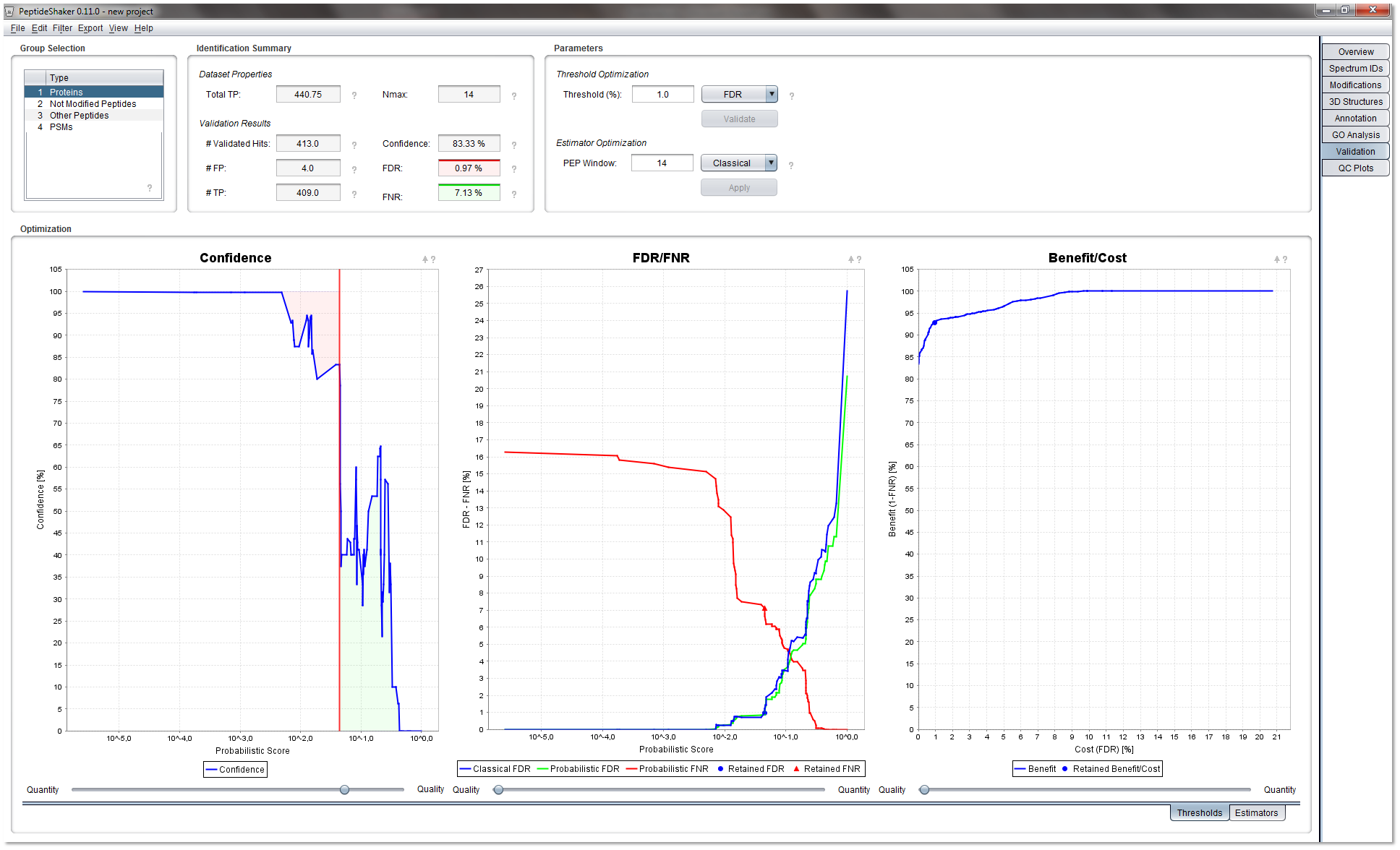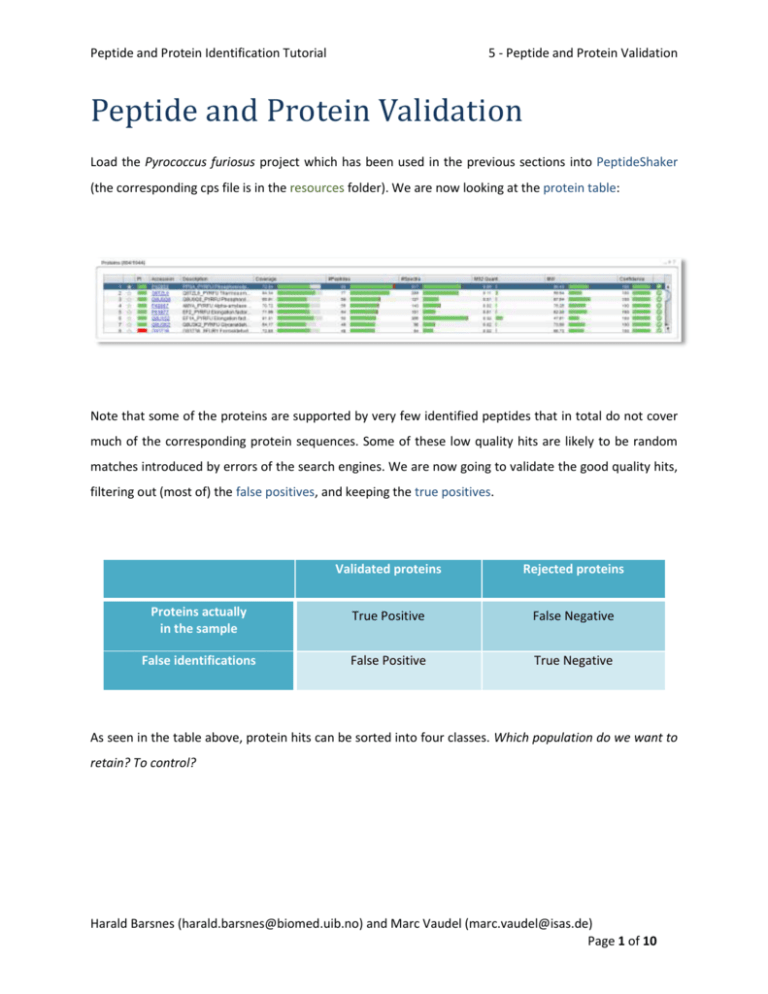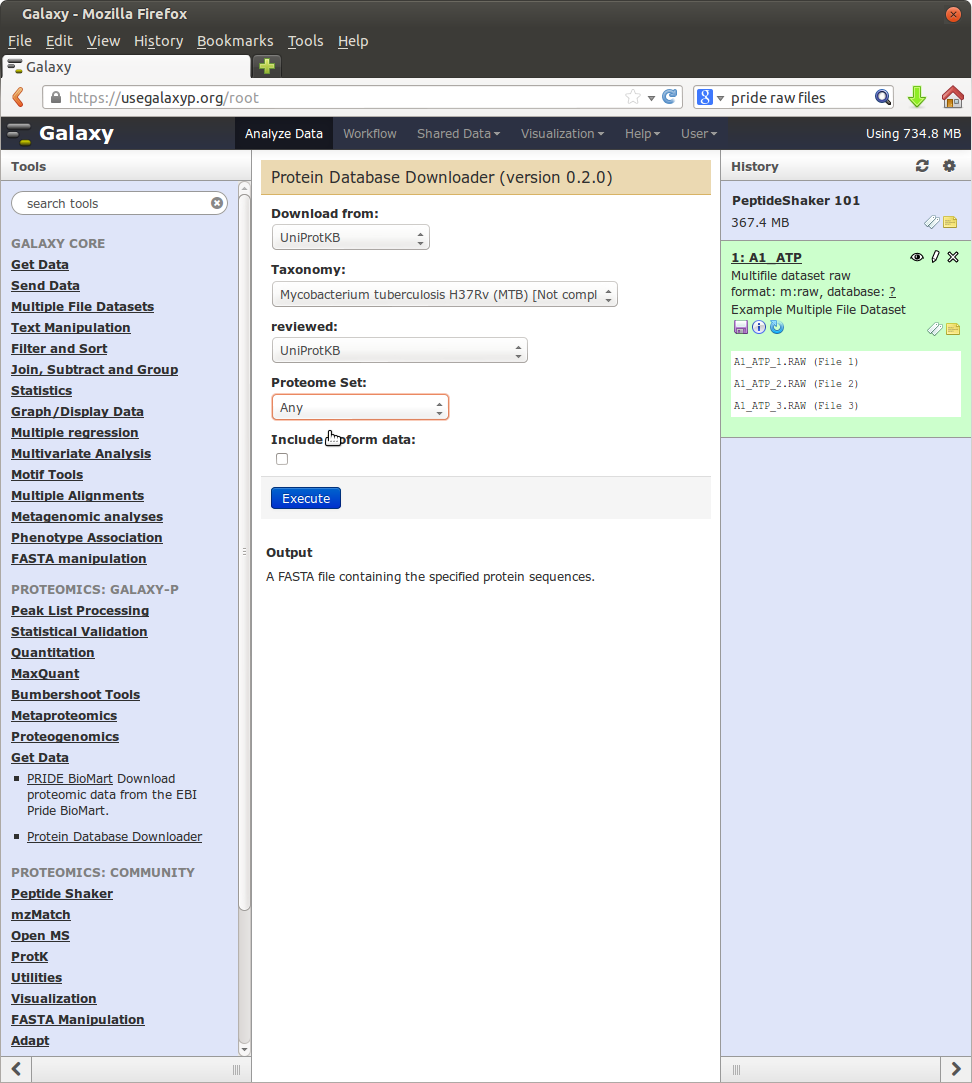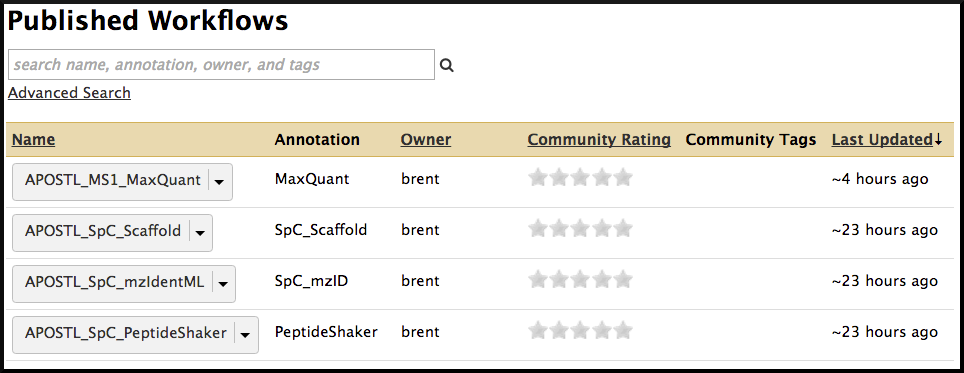
It was used to degrade the proteins to peptides. We will discuss validation in a later step of this tutorial. Luckily, the Peptide Shaker tool already takes care of protein inference and even gives us some information on validity of the protein identifications. Thus, not every peptide can be assigned to only one protein. This is not a trivial task, as proteins are redundant in most eukaryotic organisms. In bottom-up proteomics, it is necessary to combine the identified peptides to proteins. Its partner tool Peptide Shaker tool is then used to combine and evaluate the search engine results. In this tutorial we will use Search GUI tool, as it can automatically search the data using several search engines.
#Peptideshaker github software
Again, there are several software solutions for this, e.g. It is generally recommended to use more than one peptide search engine and use the combined results for the final peptide inference ( Shteynberg et al., 2013, Mol.

Different peptide search engines have been developed to fulfill the matching procedure. There can be multiple PSMs per peptide, if the peptide was fragmented several times. Accordingly, a peptide that is successfully matched to a sequence is termed PSM (Peptide-Spectrum-Match).

This step is called peptide-to-spectrum (also: spectrum-to-sequence) matching. To find out the peptide sequences, the MS2 spectrum is compared to a theoretical spectrum generated from a protein database. This method generates a spectrum of peptide fragment masses for each isolated peptide - an MS2 spectrum. Mass spectrometry experiments identify peptides by isolating them, ioinizing and subsequently colliding them with a gas for fragmentation. Afterwards, upload the resulting mzML file to your Galaxy history. You can find a detailed description of the necessary steps (“Peak List Generation”).
#Peptideshaker github install
If msconvert tool is not available in your Galaxy instance, please install the software on a Windows computer and run the conversion locally. The vendor libraries used by msconvert are only licensed for Windows systems and are therefore rarely implemented in Galaxy instances. If your data were generated on a low resolution mass spectrometer, use PeakPickerWavelet tool instead. However, the OpenMS tool PeakPickerHiRes tool is reported to generate slightly better results ( Lange et al., 2006, Pac Symp Biocomput) and is therefore recommended for quantitative studies ( Vaudel et al., 2010, Proteomics). This is implemented in msconvert tool and can be run in parallel to the mzML conversion. Machine vendors offer algorithms to extract peaks from profile raw data. For most peptide search engines, the tandem mass spectrometry (MS2) data have to be converted to centroid mode, a process called “peak picking” or “centroiding”. Due to licensing reasons, msconvert runs only on windows systems and will not work on most Galaxy servers.ĭepending on your machine settings, raw data will be generated either in profile mode or centroid mode. SearchGUI needs MGF format as input, but as we need the mzML format for several other tasks, we will convert to mzML first. The most common converter is msconvert from the ProteoWizard software suite, the format to convert to is mzML.

Raw data conversion is the first step of any proteomic data analysis.

You can find a prepared database, as well as the input proteomics data in different file formats on Zenodo. If you already completed the tutorial on Database Handling you can use the constructed database priot to the DecoyDatabase tool step. Detailed informationįor step 2, we will use a validated human Uniprot FASTA database without appended decoy sequences. Input dataĪs an example dataset, we will use an LC-MS/MS analysis of HeLa cell lysate published Use the ProteoWizard tool MSconvert and the OpenMS tool PeakPickerHiRes for step 1, and the Compomics tools SearchGUI and PeptideShaker, for the steps 2-4.įor an alte rnative identification pipeline using only tools provided by the OpenMS software suite, please consult this tutorial. Therefore, protein identification cannot be performed directly from raw data, but is a multi-step process:Ī plethora of software solutions exist for each step. In this so-called “bottom-up” procedure, only peptide masses are measured. However, in most experimental set ups, proteins are digested to peptides before the LC-MS/MS analysis. Identifying the proteins contained in a sample is an important step in any proteomic experiment.


 0 kommentar(er)
0 kommentar(er)
